- Home
- Alison Weir
Richard III and the Princes in the Tower
Richard III and the Princes in the Tower Read online
Contents
Cover
About the Book
About the Author
Also by Alison Weir
Illustrations
Dedication
Title Page
Epigraph
Foreword to the 2014 Edition
Author’s Preface
1 Richard III and the Chroniclers
2 The Sanctuary Child
3 Richard of Gloucester
4 Clarence and the Wydvilles
5 ‘Deadly Feuds and Factions’
6 ‘Those of the Queen’s Blood’
7 ‘An Innocent Lamb in the Hands of Wolves’
8 The Lord Protector
9 The Fall of Hastings
10 ‘This Act of Usurpation’
11 Richard III
12 Conspiracies
13 The Princes in the Tower
14 The Wicked Uncle
15 Rebellion
16 An Especial Good Lord
17 An Incestuous Passion
18 A Dark Prince
19 Pretenders
20 Tyrell’s Confession
21 The Skeletons in the Tower
Picture Section
Genealogical Table: Lancaster and York
Acknowledgements
Select Bibliography
Index
Copyright
About the Book
The story of the death, in sinister circumstances, of the boy-king Edward V and his younger brother Richard, Duke of York, is one of the most fascinating murder mysteries in English history. It is a tale with profound moral and social consequences, rich in drama, intrigue, treason, scandal and violence.
In this gripping book Alison Weir re-examines all the evidence – including that against the Princes’ uncle, Richard III, whose body was recently discovered in Leicester. She brilliantly reconstructs the whole chain of events leading to their murder and reveals how, why and by whose order they died.
About the Author
Alison Weir lives and works in Surrey. Her hugely popular books include Britain’s Royal Families, The Six Wives of Henry VIII, Children of England, Eleanor of Aquitaine, Henry VIII: King and Court, Mary, Queen of Scots, Isabella: She-Wolf of France, Queen of England, Katherine Swynford: The Story of John of Gaunt and His Scandalous Duchess and the novels, Innocent Traitor and The Lady Elizabeth.
ALSO BY ALISON WEIR
Non-fiction
Britain’s Royal Families: The Complete Genealogy
The Six Wives of Henry VIII
Lancaster and York: The Wars of the Roses
Children of England: The Heirs of Henry VIII 1547–1558
Elizabeth the Queen
Eleanor of Aquitaine
Henry VIII: King and Court
Mary Queen of Scots and the Murder of Lord Darnley
Isabella: She-Wolf of France, Queen of England
Katherine Swynford: The Story of John of Gaunt and His Scandalous Duchess
The Lady in the Tower: The Fall of Anne Boleyn
Mary Boleyn: ‘The Great and Infamous Whore’
Elizabeth of York: The First Tudor Queen
As co-author
The Ring and the Crown: A History of Royal Weddings, 1066–2011
Fiction
Innocent Traitor
The Lady Elizabeth
The Captive Queen
A Dangerous Inheritance
The Marriage Game
Quick Reads
Traitors of the Tower
Illustrations
1. Early seventeenth-century (?) copy of a portrait of Richard III.
(Courtesy of the Dean and Chapter of Ripon Cathedral)
2. Earliest surviving portrait of Richard, dating from c. 1516–22.
(Society of Antiquaries, London)
3. The ‘Broken Sword’ portrait.
(Society of Antiquaries, London)
4. Portrait of Edward IV by an unknown artist, c. 1516–22.
(Society of Antiquaries, London)
5. Portrait of Elizabeth Wydville in the North Transept Window at Canterbury Cathedral, probably by William Neve between 1475 and 1483.
(Woodmansterne Picture Library)
6. Illustration from The York Roll by John Rous, c. 1483–5.
(By permission of the British Library)
7. The Tower of London, from The Poems of Charles of Orléans.
(By permission of the British Library)
8. Copy by an unknown artist of a lost portrait of Henry Tudor of c. 1500.
(Society of Antiquaries, London)
9. Stained glass window from Little Malvern Priory, Worcester, c. 1481, picturing Elizabeth of York and her sisters.
(Matthew Stevens)
10. Portrait by Maynard Waynwyk (working 1509–23) of Margaret Beaufort, Countess of Richmond.
(Courtesy of the Marquess of Salisbury)
11. Edward V and Richard, Duke of York, from the North Transept Window at Canterbury Cathedral.
(Woodmansterne Picture Library)
12. Hans Holbein’s drawing from life of Sir Thomas More, c. 1527.
(Windsor Castle Royal Library. © 1992 Her Majesty the Queen)
13. Engraving after a painting of the burial of the Princes by James Northcote.
(Guildhall Library, Corporation of London)
14. Ruins of the Minoresses’ Convent at Aldgate.
(By permission of the British Library)
15. Photographs of the remains taken at the time of their exhumation in 1933.
16. The urn in which the bones repose.
(Courtesy of the Dean and Chapter of Westminster)
17. The skull of Anne Mowbray.
(Hulton Picture Co.)
This book is dedicated to
my cousin,
Christine Armour,
and in loving memory of
Joan Barbara Armour
‘… look back with me unto the Tower. –
Pity, you ancient stones, those tender babes,
Whom envy hath immured within your walls!
Rough cradle for such little, pretty ones!
Rude, ragged nurse, old sullen playfellow
For tender princes …’
Richard III, Act IV, Scene I
‘Ah me, I see the ruin of my House!
The tiger now hath seiz’d the gentle hind;
Insulting tyranny begins to jet
Upon the innocent and aweless throne:–
Welcome destruction, blood and massacre!
I see, as in a map, the end of all.’
Richard III, Act II, Scene IV
Foreword to the 2014 edition
Richard III: The Man and the Myth
This book was first published in 1992, and it came about almost by accident. Back in the Sixties I had read Josephine Tey’s hugely influential novel about Richard III, The Daughter of Time – something of a museum piece now – and Paul Murray Kendall’s sympathetic 1955 biography of the King, which I thought was the last word on the subject; and for twenty-five years I firmly believed that Richard had been much maligned.
After finishing The Six Wives of Henry VIII, I did a lot of research for an ambitious project on the fall of the Plantagenet dynasty, spanning the period from 1399 to 1563. I found that I was collating a lot of source material on the Princes in the Tower, but felt there was really not much more to be said on the subject, especially after a marathon television trial of Richard, featuring numerous experts, had been screened by Channel 4 in 1984 – and had acquitted him. Then I obtained the transcript of the trial – and found that much had been omitted. It was at this point that I pursued the idea of writing a book on the Princes, with the
aim of clearing my mind of all past conclusions and studying the subject afresh. Once the book had been commissioned, I came to study the sources for the period objectively and in greater depth – and realised that I had to revise my views.
I have found no reason since to change them, although I have no axe to grind and am open to new evidence or arguments, even if it would mean serious rewriting. Those are not empty words, as I am currently extensively revising two of my earlier books for republication, at my own choice. And I have completely revised my views on one chapter in Richard III and the Princes in the Tower, that concerning Elizabeth of York and Richard’s plan to marry her. My new findings are discussed in my recent biography of Elizabeth, which also contains further arguments that bolster my conclusions in Richard III and the Princes in the Tower.
The discovery of Richard III’s remains in Leicester has reignited debate about his involvement in the disappearance of the Princes in the late summer of 1483. (It also means that my account – derived from John Speed – of Richard’s bones being dug up at the Reformation and thrown into the River Soar is now redundant.) The problem with researching the disappearance of the Princes is the paucity and bias of the source material. The fate of Edward V and his younger brother, Richard, Duke of York, is unknown, and there is no certain proof that they were murdered. But the weight of circumstantial and other evidence points to a likely resolution of the mystery.
Chroniclers writing under Henry VII and the later Tudors rarely have a good word to say about Richard. It is often said that they are responsible for impugning his reputation, and that in so doing they were following official policy, although there is little evidence that the early Tudor monarchs actively pursued a policy of character assassination against Richard III. By the time Shakespeare wrote his play Richard III, audiences would have found his portrayal of Richard as an evil but charismatic villain largely credible, for by then the so-called ‘Black Legend’ of the King was firmly entrenched in the English national consciousness, thanks to the printed works of Polydore Vergil, Robert Fabyan, Edward Hall, Sir Thomas More and Raphael Holinshed, all sources on which Shakespeare drew. But the origins of that ‘Black Legend’ were entrenched in Richard’s own lifetime, and writers like Polydore Vergil, Henry VII’s official historian, and, famously, Sir Thomas More were not men to compromise their integrity, even to please their royal masters. Vergil mightily offended Henry VII with his debunking of the Arthurian legends that were so essential to the mythology of the Tudor descent. And we all know what happened to More for defying Henry VII.
Richard III was shaped by the age and political climate in which he lived. His formative years were overshadowed by war, treachery and violent death. He was eight when his father and brother Edmund were killed in battle. He grew up in an insecure, ever-shifting world, and twice suffered the misery of exile. He probably became hardened early on to the realities of political expediency.
Richard was a typical late-medieval magnate: acquisitive, hungry for wealth and power, brave in battle, tough and energetic. He took a keen interest in warfare and heraldry, and loved hunting and hawking. He was loyal to his brother, Edward IV, and was a good lord to his dependants, but there were instances where he did not scruple to ride roughshod over the rights of others. Ambition drove him – as would later become clear. But he was an able man, hard-working and conscientious in dealing with state business, and had that in him which inspired loyalty, and ‘a sharp courage, high and fierce’. He was pious, and his devotional books suggest he had a conscience. During his reign, his only Parliament passed some good legislation, although his policies – and his alienation of Crown lands – were aimed largely towards consolidating his precarious hold on the throne.
Shakespeare, of course, took the prevailing view of his age: that Richard III was a tyrant, a usurper and a murderer. Drawing on the calumnies of hostile chroniclers, Shakespeare portrays Richard as a grotesque, ugly hunchback who is ‘rudely stamp’d’, ‘deformed, unfinish’d’ and cannot ‘strut before a wanton ambling nymph’. In Tudor times many believed that outward deformity reflected inward evil, and Shakespeare’s Richard acts true to those expectations: ‘I am determined to prove a villain. Plots have I laid, inductions dangerous …’ He makes no secret of his determination to become King.
Contemporaries spoke only of Richard’s small stature and slightness of body. After his death in 1485, the hostile historian and antiquarian John Rous asserted that Richard had a humped back and unequal shoulders. In 1491 a schoolmaster of York, where Richard was well known, was the first to nickname him ‘Crouchback’. Vergil wrote that he was ‘deformed’. Tudor portraits of Richard were painted with a raised shoulder, or it was added later, as X-ray photography proves. But when Richard’s skeleton was discovered recently, it was found that he had suffered from a severe curvature of the spine that would have accounted for him having one shoulder higher than the other. Although five foot eight inches tall, he would have appeared shorter because of the curvature.
Several contemporaries suspected that, from the time Richard learned of his brother Edward IV’s death in 1483, his ambition focused on gaining the throne, which he usurped less than three months later. Dominic Mancini, an Italian then visiting England, wrote that Richard was driven by ambition and lust for power, and that he had set his thoughts on removing everyone who stood in the way of his mastering the throne. His elimination, by execution without trial, of the men most likely to oppose him was the act of a tyrant, and there were conspiracies against him almost from the beginning of his reign.
Richard’s assertion that Edward IV’s children were illegitimate and had no rightful claim to the throne remains highly controversial; certainly the ‘revelation’ came at an opportune moment for him, and was made public only after he had tried unsuccessfully to convince the people that his brother Edward IV had been the fruit of adultery and not the rightful King. The matter was one on which only the ecclesiastical courts could adjudicate, but Richard chose instead to have Parliament endorse the assertion, and no proofs were ever made public.
The facts remain: the Princes disappeared shortly after Richard III’s usurpation; they were held in the King’s custody as high-security prisoners of state in a secure part of the Tower; he had a compelling motive for doing away with them, the means and the best opportunity; and they were never seen again.
Circumstantial and other evidence against Richard is strong. Probably the case against him would not stand up in a court of law, but a historian must rely on contemporary evidence and credible inference, and must reach a conclusion on a balance of probabilities. It worries me when people say that Richard III was ‘rather a nice man’, as I read recently in an academic article, or that his reconstructed face is not that of a tyrant. One can only go on the evidence, which many serious historians find convincing. If you study history objectively you do not try to make the facts fit a theory; you wait to see what you can discover and infer from original sources. Historians sometimes study the same sources and draw different conclusions, but with Richard III there often seems to be a high degree of bias and denial, and indeed emotional investment, as was seen in the media following the discovery of his remains, when one almost got the feeling that this sensational find equated to Richard being vindicated.
Much of the evidence against Richard comes from the detailed account of the murder of the Princes written by Sir Thomas More around 1513. It is unfinished and only appeared in print after More’s death. Roger Ascham, the great Elizabethan scholar, described it as a model of historical writing, and it certainly ticks all the boxes in regard to Tudor expectations of history. More went to great trouble to research his narrative, seeking out first-hand evidence; he used it to illustrate a moral lesson, and he invented speeches for his characters that are based on his source material, an accepted practice at that time. His account is rich in authentic detail, although in places, as he makes clear, he had to ‘divine upon conjectures’. He had no motive for making anything up, yet for al
l his integrity and scholarship, his account is often rejected by revisionists. Even so, his sources were probably people who had been pretty close to events, and other evidence fits with his account.
In the autumn of 1483 rumours accusing Richard III of the murder began to surface in England and abroad. Public opinion generally held that he had had the Princes killed, and speculation focused not on who had done the deed, but on how it had been done. It was said that Richard had ‘put to death the children of King Edward, for which cause he lost the hearts of the people. And thereupon many gentlemen intended his destruction.’ Ruthlessness in war and politics was tolerated; the usurpation of the throne by a man tried and tested in government and the field of battle was accepted, because his rule was preferable to that of an untried boy; but child murder was a step too far. The Tudor historian Bernard André wrote that, in the wake of the rumours, ‘the entire land was convulsed with sobbing and anguish. The nobles of the kingdom, fearful of their lives, wondered what might be done against the danger. Faithful to the tyrant in word, they remained distant in heart.’ We must allow for a degree of exaggeration from a partisan observer, but this was written less than twenty years later, when many people would have remembered the events of 1483. The rumours were believed as far away as Danzig, as Caspar Weinreich’s contemporary chronicle recorded that year: ‘Later this summer, Richard had himself crowned King of England; and he had his brother’s children killed.’ The rumours irrevocably damaged the King’s reputation and undermined his support, but he never denied them, or gave the lie to them by producing the Princes alive, even when it was strongly in his interests to do so. It would also have been in Richard’s interests to make it known if they had died natural deaths. Claims that one or both of them survived are fascinating, but unconvincing, and cannot be substantiated by good evidence.
There have been theories that Richard’s enemies – the Duke of Buckingham, Margaret Beaufort and her son, Henry Tudor, the future Henry VII – might have arranged their murder, which would have been as advantageous to them as it would have been to Richard III. But while a handful of contemporaries suggested that Buckingham was involved, none of them – even Margaret of Burgundy, his mortal enemy – ever accused Henry Tudor of the deed, and only one seventeenth-century source accuses Margaret Beaufort. When, late in 1483, a rebellion led by Buckingham was suppressed by Richard, and Buckingham was captured and executed for treason, Richard had the perfect opportunity to lay the blame at his door and so give the lie to rumour. He did not seize it.
-->

 Richard III and the Princes in the Tower
Richard III and the Princes in the Tower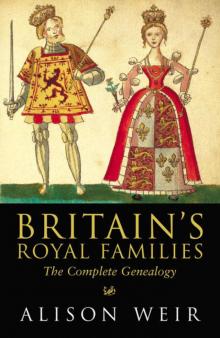 Britain's Royal Families: The Complete Genealogy
Britain's Royal Families: The Complete Genealogy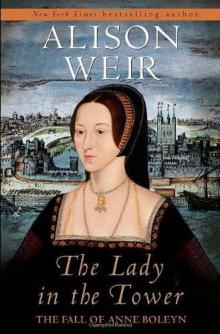 The Lady in the Tower: The Fall of Anne Boleyn
The Lady in the Tower: The Fall of Anne Boleyn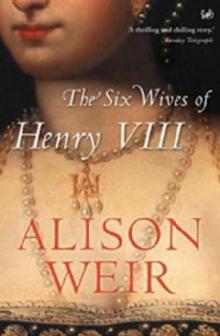 Six Wives of Henry VIII
Six Wives of Henry VIII Elizabeth of York: A Tudor Queen and Her World
Elizabeth of York: A Tudor Queen and Her World Captive Queen
Captive Queen Innocent Traitor
Innocent Traitor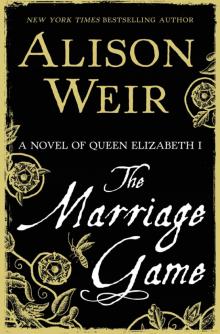 The Marriage Game
The Marriage Game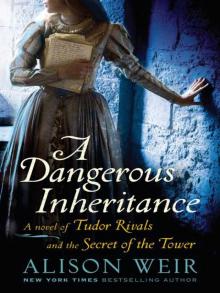 A Dangerous Inheritance
A Dangerous Inheritance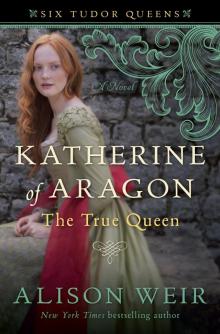 Katherine of Aragón: The True Queen
Katherine of Aragón: The True Queen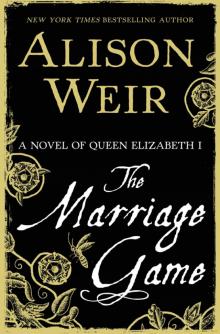 The Marriage Game: A Novel of Queen Elizabeth I
The Marriage Game: A Novel of Queen Elizabeth I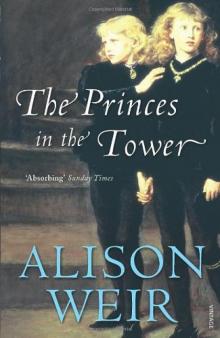 Princes in the Tower
Princes in the Tower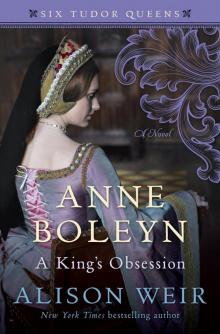 Anne Boleyn: A King's Obsession
Anne Boleyn: A King's Obsession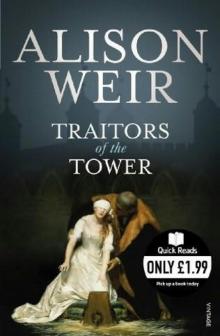 Traitors of the Tower
Traitors of the Tower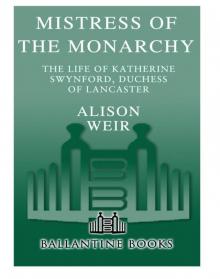 Mistress of the Monarchy: The Life of Katherine Swynford, Duchess of Lancaster
Mistress of the Monarchy: The Life of Katherine Swynford, Duchess of Lancaster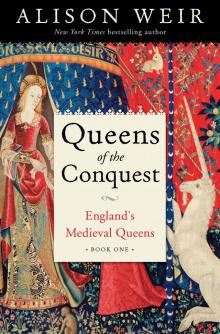 Queens of the Conquest: England’s Medieval Queens
Queens of the Conquest: England’s Medieval Queens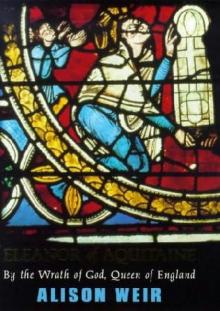 Eleanor of Aquitaine: A Life
Eleanor of Aquitaine: A Life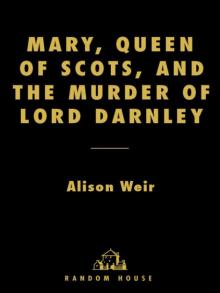 Mary, Queen of Scots, and the Murder of Lord Darnley
Mary, Queen of Scots, and the Murder of Lord Darnley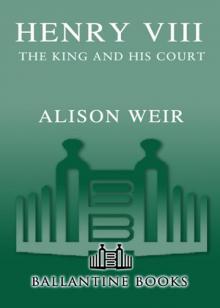 Henry VIII: The King and His Court
Henry VIII: The King and His Court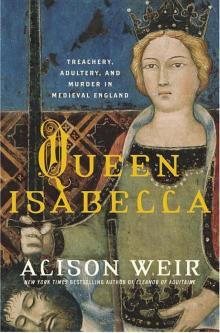 Queen Isabella: Treachery, Adultery, and Murder in Medieval England
Queen Isabella: Treachery, Adultery, and Murder in Medieval England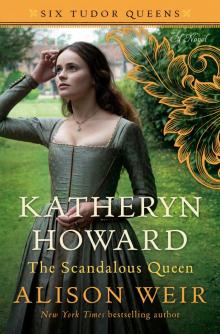 Katheryn Howard, the Scandalous Queen
Katheryn Howard, the Scandalous Queen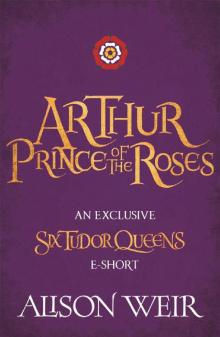 Arthur- Prince of the Roses
Arthur- Prince of the Roses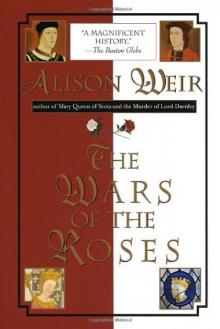 The Wars of the Roses
The Wars of the Roses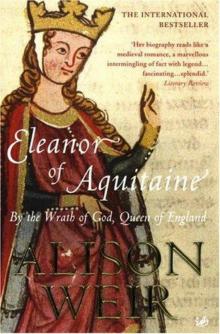 Eleanor of Aquitaine: By the Wrath of God, Queen of England
Eleanor of Aquitaine: By the Wrath of God, Queen of England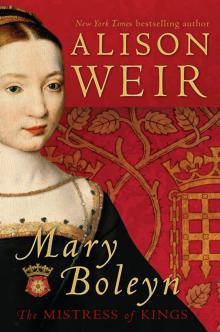 Mary Boleyn: The Great and Infamous Whore
Mary Boleyn: The Great and Infamous Whore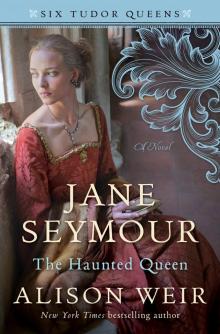 Jane Seymour: The Haunted Queen
Jane Seymour: The Haunted Queen Anna of Kleve, the Princess in the Portrait
Anna of Kleve, the Princess in the Portrait Lancaster and York: The Wars of the Roses
Lancaster and York: The Wars of the Roses The Grandmother's Tale
The Grandmother's Tale The Princess of Scotland (Six Tudor Queens #5.5)
The Princess of Scotland (Six Tudor Queens #5.5)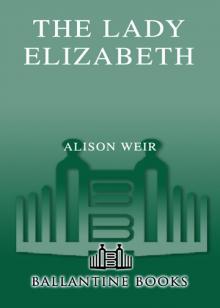 The Lady Elizabeth
The Lady Elizabeth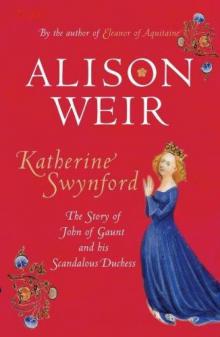 Katherine Swynford: The Story of John of Gaunt and His Scandalous Duchess
Katherine Swynford: The Story of John of Gaunt and His Scandalous Duchess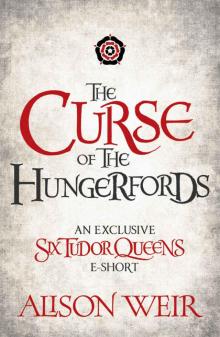 The Curse of the Hungerfords
The Curse of the Hungerfords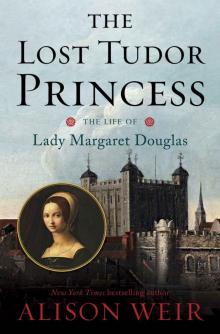 The Lost Tudor Princess: The Life of Lady Margaret Douglas
The Lost Tudor Princess: The Life of Lady Margaret Douglas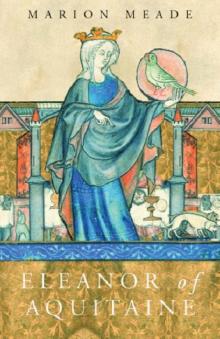 Eleanor of Aquitaine
Eleanor of Aquitaine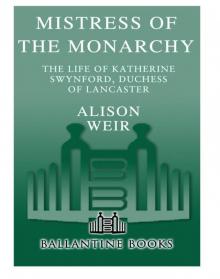 Mistress of the Monarchy
Mistress of the Monarchy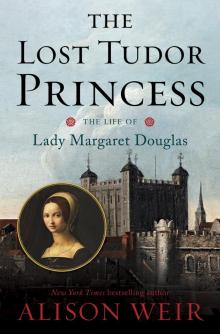 The Lost Tudor Princess
The Lost Tudor Princess Henry VIII
Henry VIII Anne Boleyn, a King's Obsession
Anne Boleyn, a King's Obsession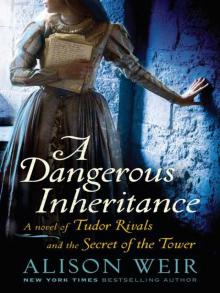 A Dangerous Inheritance: A Novel of Tudor Rivals and the Secret of the Tower
A Dangerous Inheritance: A Novel of Tudor Rivals and the Secret of the Tower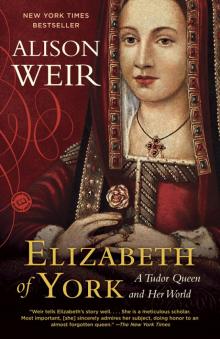 Elizabeth of York
Elizabeth of York Katherine of Aragon, the True Queen
Katherine of Aragon, the True Queen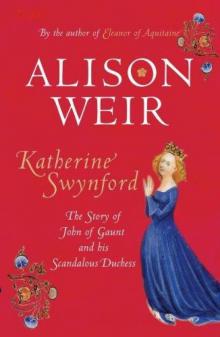 Katherine Swynford
Katherine Swynford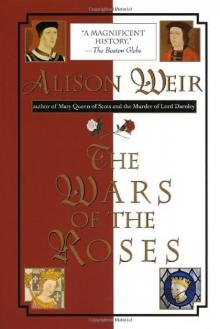 Wars of the Roses
Wars of the Roses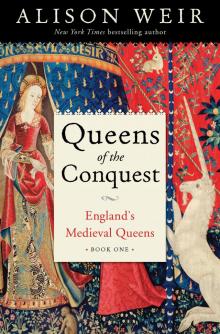 Queens of the Conquest
Queens of the Conquest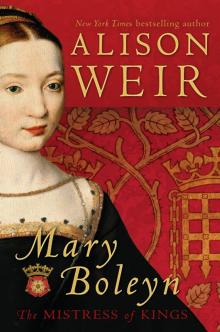 Mary Boleyn
Mary Boleyn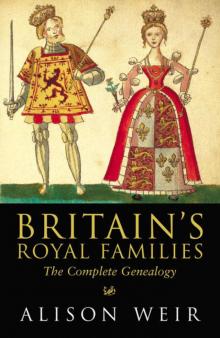 Britain's Royal Families
Britain's Royal Families The Tower Is Full of Ghosts Today
The Tower Is Full of Ghosts Today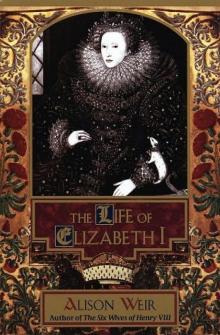 Life of Elizabeth I
Life of Elizabeth I Anne Boleyn A King's Obssession
Anne Boleyn A King's Obssession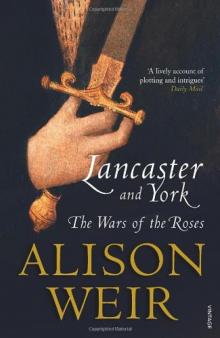 Lancaster and York
Lancaster and York Jane Seymour, the Haunted Queen
Jane Seymour, the Haunted Queen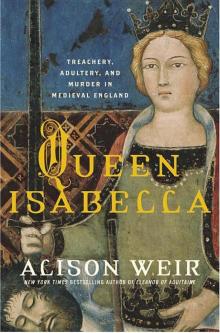 Queen Isabella
Queen Isabella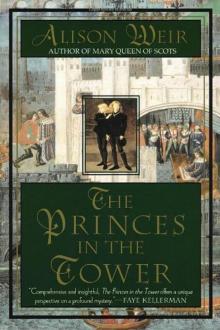 The princes in the tower
The princes in the tower